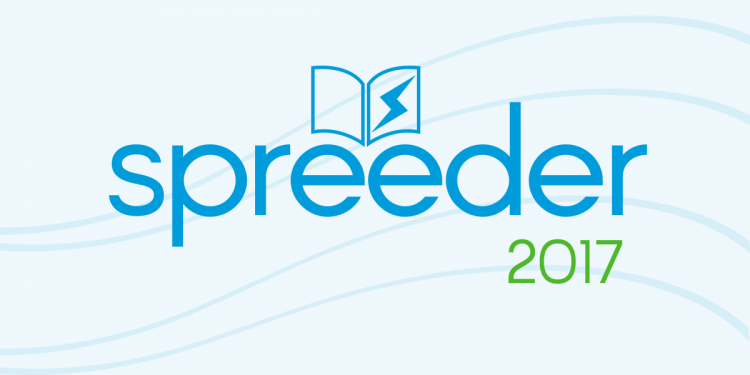Before I mention how tDCS can benefit your reading speed you probably should know a little about tDCS If you already know about tDCS please skip the first paragraph.
Firstly, What Exactly is tDCS?
The electrical activity of certain cells in our body, such as nerve and muscle cells has always been a mystery to scientists. It is amazing that all the things that we see, hear, smell, taste, and touch are based on electrical impulses generated from cells. All our emotions, memories, behaviors, and moods are the result neural connections. All this is well organized and synchronized in our brain and spinal cord, which together make the central nervous system and transcranial direct current stimulation (tDCS) can seemingly enhance this system.
For over 100 years, people have been experimenting with electrical currents that can change the conduction of impulses between nerve cells, more recently people have learned how to benefit from it. tDCS is one of the most advanced approaches to external brain stimulation that has been well researched and shown some impressive results. tDCS works by delivering a very low electrical current stimulating specific areas of the brain through the scalp with two simple wet sponges, one sponge the cathode (positive current) and one the anode (negative current).
How Could It Help You Improve Reading Speed?
It’s worth noting that some scientists have noticed that tDCS not only increases reading speed, but most importantly improves the accuracy of reading at faster speeds. The cognitive functions tDCS improves are now being examined more thoroughly, however I’m going to give you my anecdotal results for improvement in my reading and comprehension. The tDCS kit I have purchased and recommend is the Omni Stimulator found at http://www.omnistimulator.com .
How to Use My tDCS Kit?
As stated my decision was to purchase the Omni Stimulator. Its simplicity for an average user makes it a simple choice and the price said grab me! It consists of a voltage regulation device, two cables, two sponge electrodes and a headband. You also have very detailed instructions on how to position the electrodes on the surface of your scalp in order to stimulate specific parts of the brain and get the desired result. For fast reading, scientists recommend the anodal stimulation of the border between the left temporal and left parietal region of the scalp. Firstly, I simply soaked the electrodes with the saline solution (for better conductivity than water) then placed the electrodes in their position and secured them with the headband. It was very easy to use. One thing you may notice when you turn the tDCS kit is a tingling sensation where the electrodes sit, this is just the small electrical current and you get used to it quite quickly.
My Personal Results
As a student, I recall using energy drinks and having what I called booster coffees (6 teaspoons of coffee in one cup) in order to keep my focus while studying for exams. If I had something like Omni tDCS kit at that time, I would have used that in its place and not been so jittery from all the caffeine. Today, my work requires skimming through a lot of content from which I have to notice and extract the sequences that are relevant to the particular problem I need to solve. I have been using the Omni device for the past 6 months, and there is a noticeable difference. My reading is definitely faster, and I think that is because it feels much easier than before. I used to get very tired, especially when reading technical language, and my reading speed used to slow down after a few working hours, not to mention the decrease in comprehension. I did notice results with my first use, but I did question whether this may have been the placebo effect like any good skeptic. However, after months of use I see that this little Omni tDCS kit really keeps me focused on my reading. It seemingly makes my mind clearer and although I still take breaks, I have noticed that they are becoming shorter and that my mind is getting refreshed and ready to work much faster than before.
Writing & Other Speed Readers Thoughts
I use the Omni Stimulator according to the instructions for speed reading, but what I have also noticed is a higher level of creativity while writing. I’m sure you have all experienced moments when you get stuck trying to find the right words to describe something, well that rarely happens to me now. Moreover, people I recommended the Omni Stimulator to in the speed reading field had similar feedback. Depending on their daily activities, some reported they were able to read faster, while others noticed a greater effect on reproducing the content they have read.
Conclusion
In conclusion I think that tDCS technology is fantastic for speed reading. Using my Omni Stimulator has definitely been worth it. I highly recommend grabbing a kit and giving it a shot.
For more information or to grab your Omni tDCS kit click here.
References
Thomson JM, Doruk D, Mascio B, Fregni F, Cerruti C. Transcranial direct current stimulation modulates efficiency of reading processes. Frontiers in Human Neuroscience. 2015;9:114. doi:10.3389/fnhum.2015.00114.
Turkeltaub PE, Benson J, Hamilton RH, Datta A, Bikson M, Coslett HB. Left lateralizing transcranial direct current stimulation improves reading efficiency. Brain Stimulation. 2012;5(3):201-207. doi:10.1016/j.brs.2011.04.002.
Brasil-Neto JP. Learning, Memory, and Transcranial Direct Current Stimulation. Frontiers in Psychiatry. 2012;3:80. doi:10.3389/fpsyt.2012.00080.
Scheldrup M, Greenwood PM, McKendrick R, et al. Transcranial direct current stimulation facilitates cognitive multi-task performance differentially depending on anode location and subtask. Frontiers in Human Neuroscience. 2014;8:665. doi:10.3389/fnhum.2014.00665.



